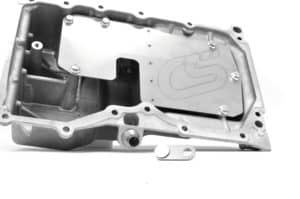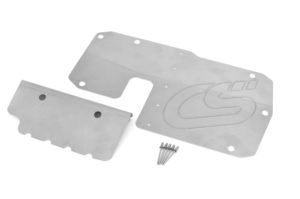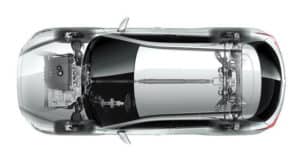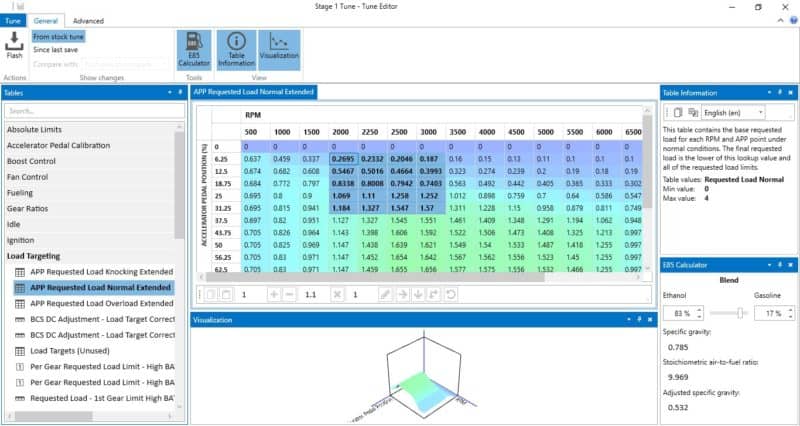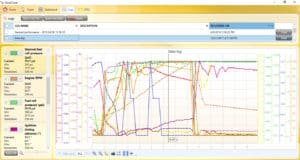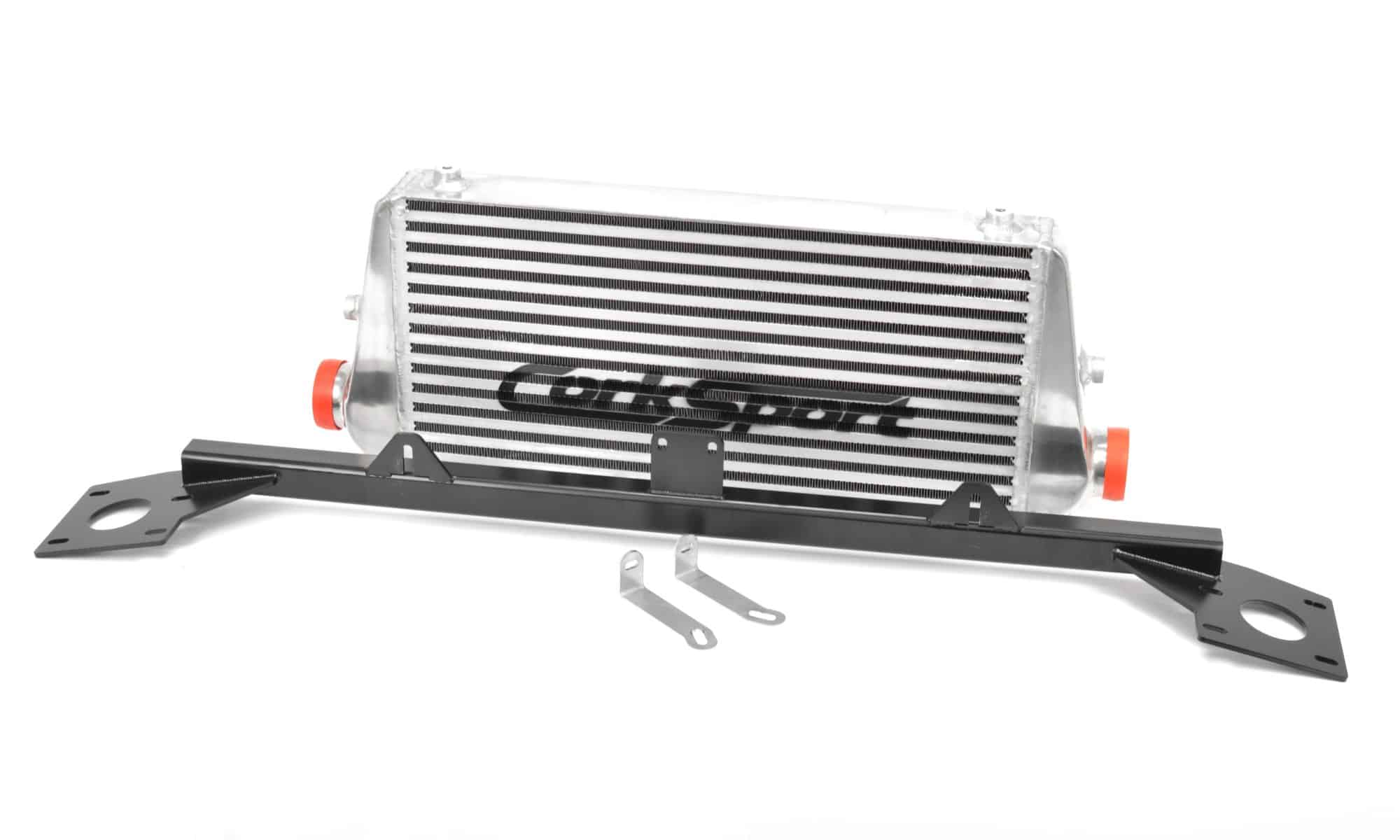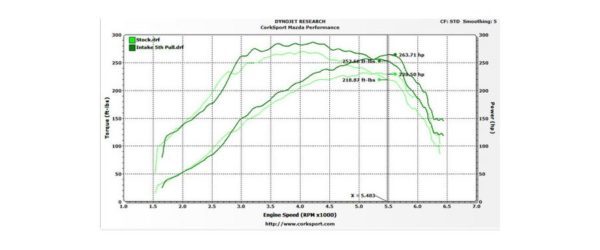Why no AWD?
Mazda has recently said they would like to have AWD in most models, but the current generation has some space/packaging constraints. I was scratching my head over this statement trying to figure out why the existing model Mazda 6 is offered in AWD in Europe with the Skyactiv diesel engine and Mazda is saying they cannot get it to fit.
I think I may have stumbled onto the answer after having a conversation with a friend recently. It is no secret Mazda is working on offering the diesel Cx5 to the US market, but it has been held up in government regulations with the EPA courtesy of VW and FIAT cheating on their engine mapping and emissions. Mazda has the setup which will pass and get the power they want to offer but here lies the problem.
Say you were going to offer a Mazda 6 diesel model that now meets the US emissions with the urea injection. Where are you going to put the tank to hold in the car? In the Cx5, which has more space to put something like a urea tank, it is not as much of a problem with packaging to find a spot. The Mazda 6 doesn’t sit off the ground as high and allow you a space to get everything to work out and be able to still fit the transfer case, drive shaft, and rear differential.
Why doesn’t Mazda offer both? This is a question I wish I could sort out. It wouldn’t be the first time Mazda would have models with different floor plans. Mazda has done this in the past with the 323s and Protégé, so I don’t think this is the reason why. This could be a possible play on the overall strategy with North America and only offer the AWD as a diesel model. This goes against what we have already with the Cx5 2.5 gas engine and the Cx9 gas 2.5 turbo motor, so I don’t think this is it which leaves this question for me to puzzle over a bit longer.
With the announcement of the Mazda/Toyota plant in Alabama and the statement by the chief of Mazda saying Mazda is going to build something different, this could be the queue that they will find a way to give us AWD turbo fun again. If anything the announcement of the new plant will finally get the EPA to give the green light to the Skyactiv diesel engine.
Overall Mazda desire to give us AWD still has me hopeful for the 2.5 Skyactiv gas turbo with all-wheel drive, but all the current signs say nope. Please Mazda, I don’t mind being wrong on this one.
-Derrick
CorkSport Versatune
We are excited to announce a powerful and unique release to the CorkSport Product catalog.
Starting off 2018 with a bang; CorkSport is now an official distributor and reseller of Versatune Tuning Software.
If you are unfamiliar with what Versatune is, then have a quick read and check out what it is, how it works, some of the unique features, and why you should consider purchasing it for your daily driven or high-performance Mazda.
Versatune is a powerful engine tuning solution featuring a modern and easy to use interface. With just a simple few mouse clicks, you can unlock the full potential of your Mazda using the intuitive wizard guided install and ECU flashing process.
Versatune software makes engine calibrations as easy as 1, 2, and 3. Backed by an online tune database that provides easy access to free pre-built tunes for typical configurations of performance parts VT makes it easy to get power from recent upgrades on your car. Installing of the pre-built tunes are as simple as selecting the desired tune from the online tune database and following the flashing wizard. No tuning skills or extensive knowledge is required.
If custom tuning is more your style or you need to get into the finer details of calibration maps, then the Versatune software will work for you as well. VT software also includes a powerful tune editor that exposes the critical performance and drivability related tables in the ECU. You can custom tune your car to accommodate your specific modifications and tuning goals. 3D visualizations, table descriptions, and data manipulation tools help speed up the custom tuning process.
The best part is even if you are requiring a custom tune but don’t feel comfortable performing it yourself, Versatune has a growing network of professional tuners and e-tuners that can provide custom tuning services to help you meet your specific needs.
Over the past few months, CorkSport has had the opportunity to work closely with Versatune to further develop and grow the support for several vehicles in the Mazda lineup. Including but not limited to the 3rd gen Mazda 3, 2nd gen RX-8, and the new 4th gen ND chassis Miata.
With each of these Mazdas, we have spent countless hours on the dyno, street, and race track to fine tune calibrations and settings in this easy to use software. Each Mazda has shown consistent and reliable gains across the rev range all while still retaining OEM like drivability.
We are working on packages with the CorkSport parts you love, a custom tune to make the most of them, and a bit of a discount to get you rolling.
You can expect to see a few packages for 2016+ Mx5 in the next few weeks.
2007-2009 Mazdaspeed 3 Crash Bar
Want Big Power from your GEN1, but your Intercooler is holding you back?
This was the case for our Engineering Manager Barett and his Mazdaspeed3, so he created his crash bar for a big front mount intercooler; we liked his setup so much that we made it for everyone.
Introducing the CorkSport Mazdaspeed Crash Bar for 2007-2009 Mazdaspeed3; constructed of high-quality laser cut steel with a durable powder-coated finish, it can stand the test of time while giving you room for the big front mount you want.

Now let me start off by saying this is not a typical CorkSport part. It is not an easy bolt-in install like most of our other parts.
There is no easy way to remove the OE crash bar without cutting it off. As a result, this install is extensive and more or less permanent. Don’t let all of that scare you off though; this is still a CorkSport part. That means the same great quality and customer service that you’ve all grown accustomed to.
We have made this as easy as we possibly can. Once the OE crash bar is cut off and some trimming done to the headlight surrounds, the bar is located in the correct position based on the OE hood latch support. Then holes are drilled in the OE crash bar support rails to securely mount the CorkSport Crash Bar. No welding required for install.
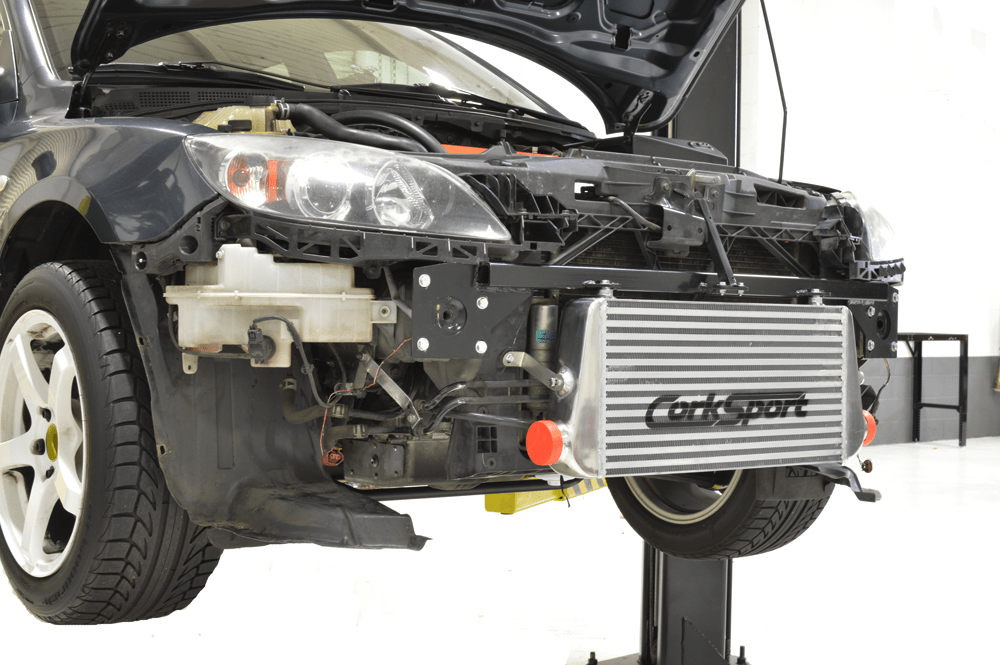
Now I know what all of you are asking, what about a big FMIC to fit the bar?
Well, we are offering the crash bar by itself and with our 23 ½” x 11” x 3” intercooler that’s been proven on a 550whp car. Since the CorkSport Mazdaspeed3 crash bar was designed to fit this FMIC, brackets come pre-welded in the correct locations to mount to the top of the FMIC.
Also, stainless steel side brackets are included to attach the IC’s lower mounting locations to existing holes on the radiator core support for added stability.
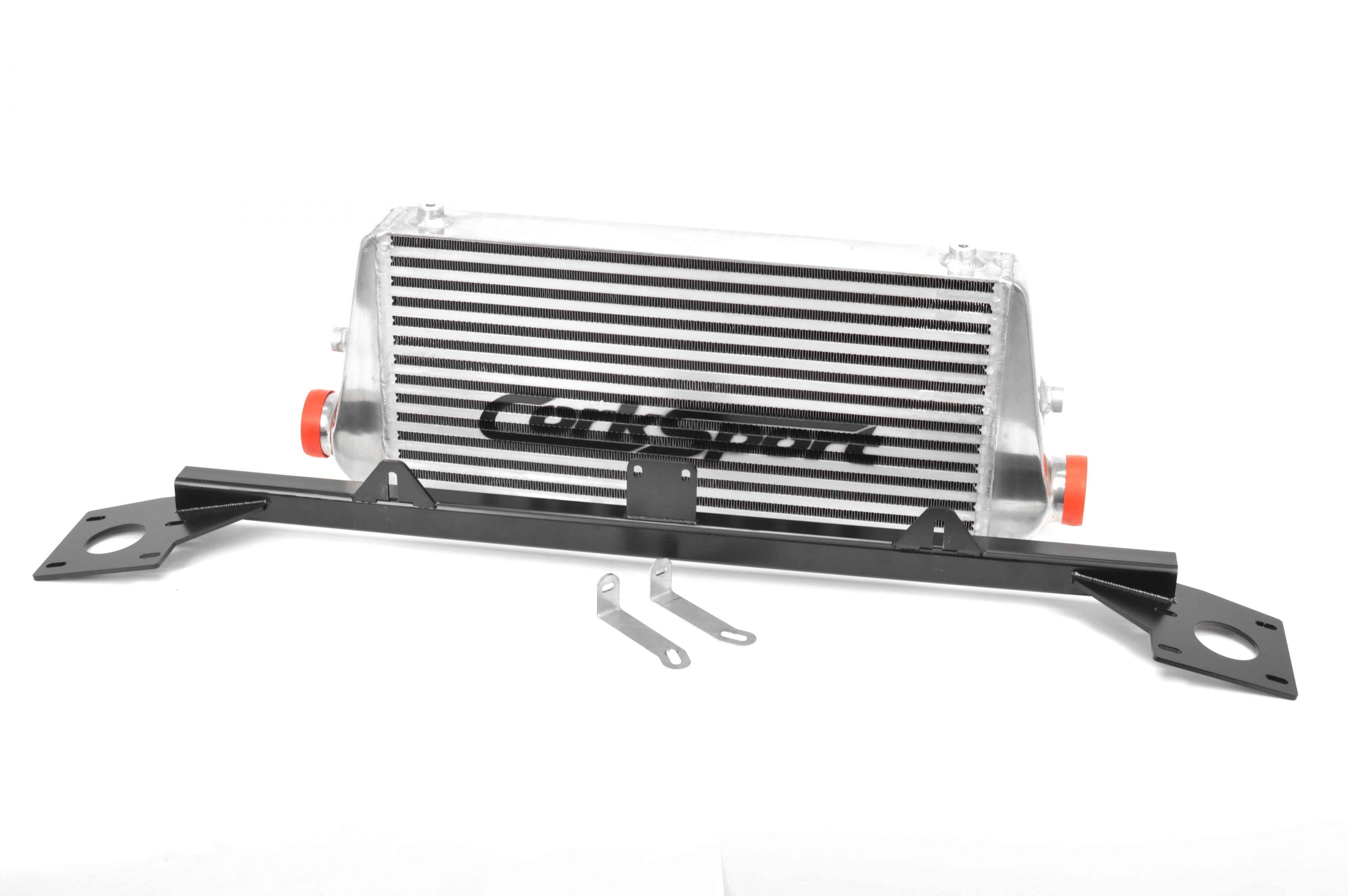
This entire package fits well behind the OE bumper with little to no trimming or modification. OE fog lights stay functional, and you even can utilize the OE toe hook location as it is retained with the CorkSport crash bar.
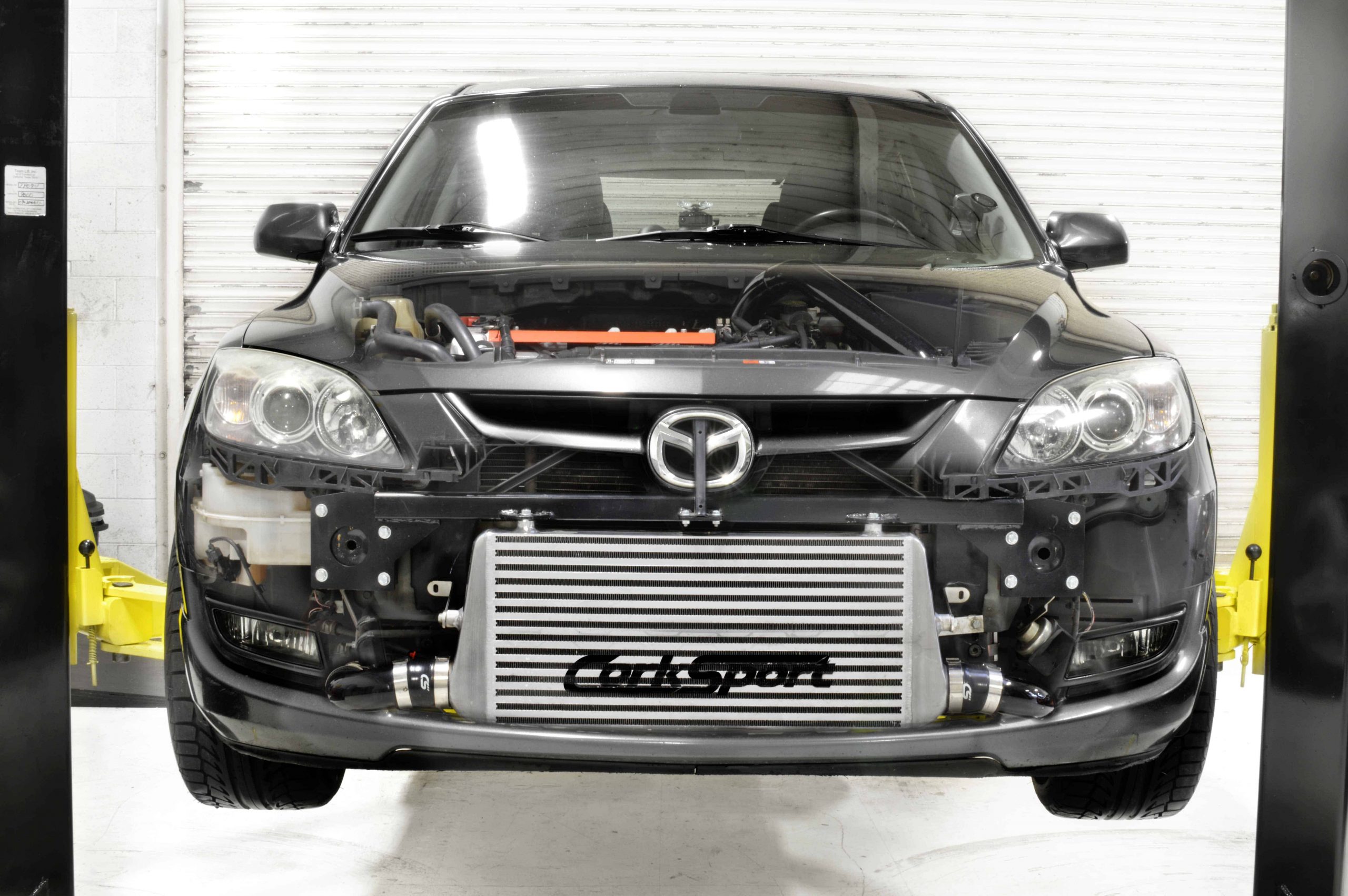

If you’ve been looking for that final component to complete your GEN1 big power build and have been trying to avoid the headaches of creating your custom crash bar, the CorkSport Crash Bar is for you.

Connect with us
You may also like
- Flow Test Results – Mazdaspeed 3 FMIC for SRI vs Ram Air
- The New and Improved Mazdaspeed FMIC
- CorkSport Announces Expansion of Mazdaspeed 3 Front Mount Intercooler Product Line
- PRESS RELEASE: CorkSport Power Series Front Mount Intercooler Kit For the 2010-2013 MazdaSpeed 3
New Year, New Gains
As the New Year rolls around, most people are looking for a change for the better in their lives.
At CorkSport we think one of the best changes you can make is more power for your Mazdaspeed. We have all the parts you need to liven up your Mazdaspeed3 or Mazdaspeed6 in the New Year.
Safety First
One of the first things to consider when modifying your Speed is the health of its engine. Performing maintenance is very important but it only gets you so far. When adding power, one of the first modifications on your list should be the CorkSport Max Flow Fuel Pump Internals.
These pump internals allow you to maximize your stock fuel system for optimum power capabilities and safer than OE A/R ratios. This means you can add the power you want and have peace of mind that your engine will get the fuel it needs.
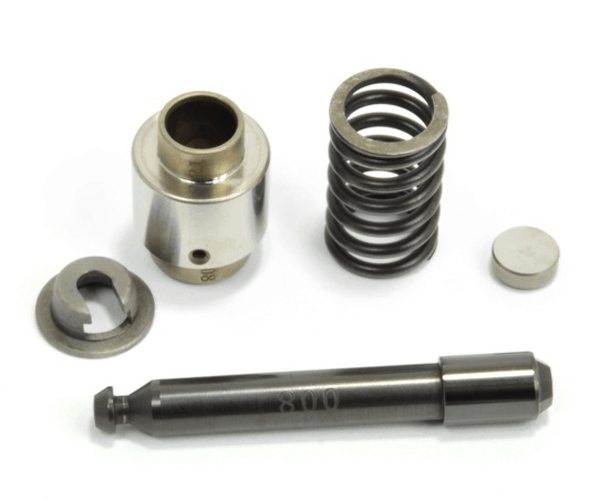
Put the Power Down
Like the CS fuel pump internals, the CorkSport Stage 2 RMM for Mazdaspeed 3 will not directly increase the power levels of your car; however, it helps you put all that hard-earned power down. By decreasing the amount the engine can rotate, the Rear Motor Mount allows for reduced wheel hop and torque steer while providing faster throttle response and crisper shift feel.
Even we are surprised how much this engine mount changes how a Mazdaspeed 3 feels. Don’t worry Mazdaspeed 6 guys and gals, we have an RMM for you too.
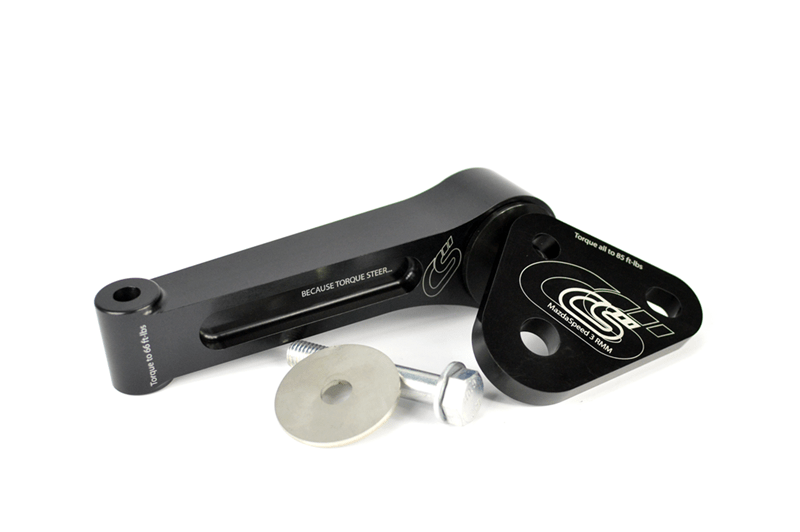
Improving Airflow
Engines in an extremely simple sense are air pumps; so the faster you can get air in and out of the system, the better. That being said, some of the simplest and easiest power gains you can get from your Mazdaspeed are from upgrading the intake and exhaust. We have seen peak gains of 25ft-lbs and 33WHP from only the CorkSport Stage 2 Intake and a CorkSport Racepipe.
Checkout the dyno sheet below.
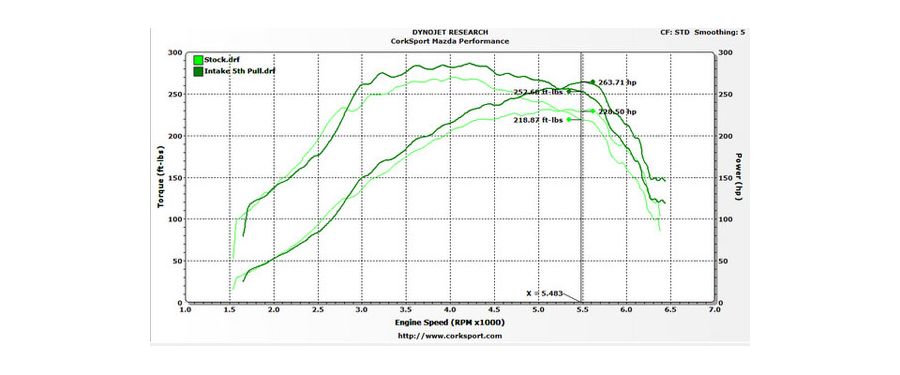
Power and torque levels will be further increased if you install a full CorkSport Turbo Back Exhaust instead of just the race pipe section.
The catback exhaust section has proven to gain up to 14WHP while the downpipe section alone has proven to gain up to 21WHP. In the dyno graph below, the downpipe car had a CorkSport Intake installed at the same time as the downpipe (hence the 50hp gain).
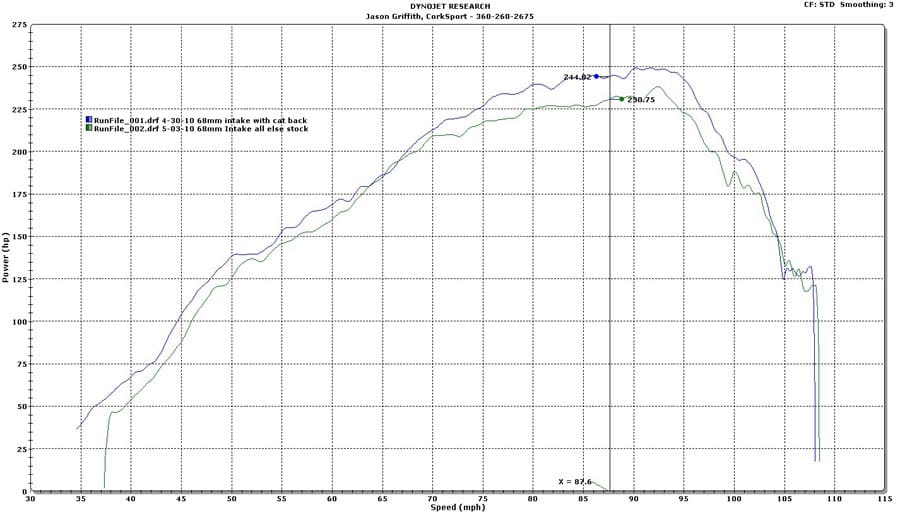

If that wasn’t enough flow for you, we also offer 3” and 3.5” intakes for even more airflow into your turbo. Keep in mind though, once you get into those you will need to use a new tune to ensure your car runs optimally. But check out the extra flow you get!

Turbo Upgrade
The CorkSport Drop-In Turbo is a fantastic upgrade to the stock K04 turbo that allows your car to make more power on an equivalent boost pressure. It will work with any mods you already had on your OE Mazdaspeed turbo as the CS turbo is truly a drop in upgrade. With supplemental tuning, fueling, and supporting parts, you can push your Speed to its limits.
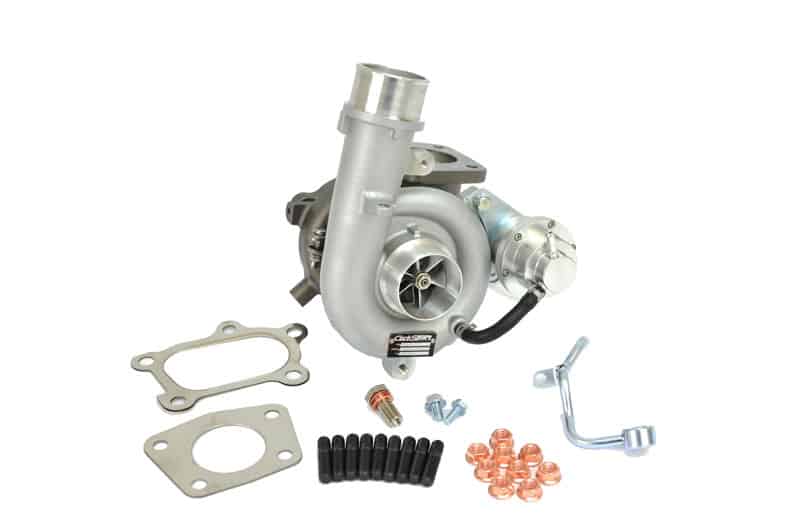
Stay Up-to-date with CorkSport
The Next Level
CorkSport also manufactures parts that can take your Speed beyond the parts discussed above. A short list of the parts with the best power gains can be seen below:
- CorkSport Intake Manifold: A higher flowing IM can support much more power than the relatively restrictive OE unit. Best when paired with a larger throttle body.
CorkSport Camshafts: Replacement cams with extra lift to provide increased power and torque across the entire RPM range.
Bigger CorkSport Turbo? Yes, there is one in development. See this blog post for details.
No matter what your goals are for this year, CorkSport is here to help you achieve them. Whether you just picked up a Mazdaspeed and are unsure where to start, or have been driving one for years and want the excitement you once had back, CorkSport has a part for you.
Daniel
CorkSport Engineer



